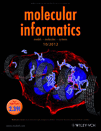An Investigation of the Relationship Between Molecular Topology and CYP3A4 Inhibition for Drug-like Compounds
Graphical Abstract
Abstract
Earlier studies have shown that CYP3A4 inhibition is influenced by lipophilicity, size and fMF, where fMF is the size of the molecular framework divided by the total size of the molecule. Other previous studies have shown that there is an enrichment of compounds with only one ring system among drugs in comparison to clinical candidates and general bioactive compounds as well as enrichment among natural products and human metabolites compared to general bioactive compounds. Thus a logical extension of the earlier investigations would be to study how ring systems influence CYP3A4 inhibition. It is shown here that compounds with only one ring system have lower CYP3A4 inhibition compared to compounds with several ring systems. The reason therefore is that they are both smaller and have smaller fMF values compared to compounds with several ring systems. The investigation provides additional insights into how a molecule should be constituted to have low CYP3A4 inhibition and may influence library design and compound acquisitions.





